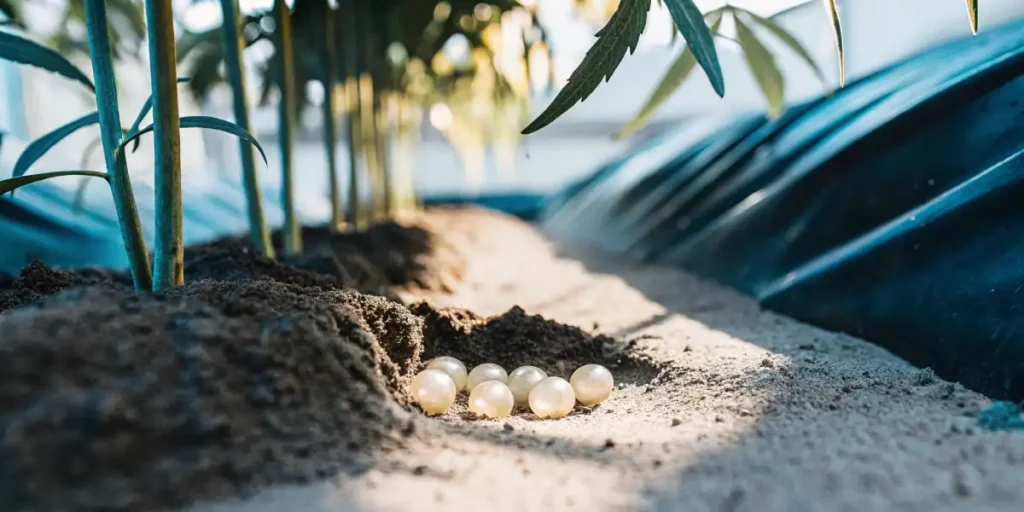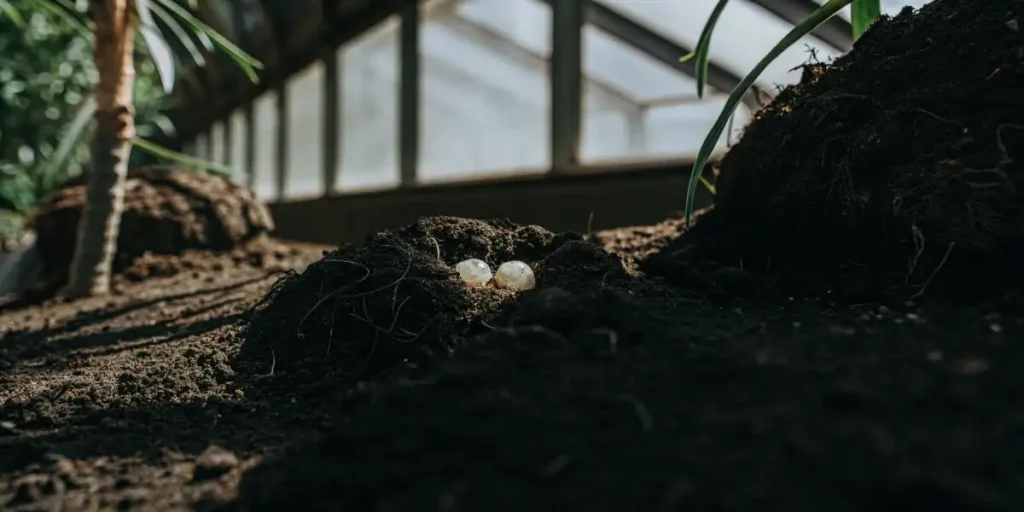
The Nursery of Nightmares: How to Stop Bugs from Laying Eggs in Your Roots
It’s one thing to find a stray bug on a leaf. You can deal with that. But it’s a far more sinister feeling to discover that pests have turned the precious root zone of your cannabis plant into their own personal nursery. Finding bug eggs on your roots means you’re not just fighting an invasion; you’re fighting the next generation.
But don’t worry. We’re not just going to fight them. We’re going to make your soil a place so unwelcoming, they won’t even think about laying their eggs there in the first place.
Recommended Strains
Critical Daddy Purple
|
|
THC | 19% (Medium) |
|
|
Type | Feminized |
|
|
Yield | High |
|
|
Phenotype | 50% Indica / 50% Sativa |
Apples and Bananas
|
|
THC | 23% - 30% (High) |
|
|
Type | Feminized |
|
|
Yield | Low |
|
|
Phenotype | 50% Indica / 50% Sativa |
Why Your Soil Became a Breeding Ground
Pests are smart in a primal way. They don’t lay eggs where their young can’t survive. If they chose your pot, it’s because you unintentionally created the perfect environment for them. And that environment almost always comes down to one thing: hot, stagnant, oxygen-deprived soil.
When your pot overheats, the water in the soil warms up and loses its dissolved oxygen. This creates a swampy, anaerobic incubator that is a paradise for fungus gnats, root aphids, and other pests to lay their eggs. The larvae hatch, find weak, suffocating roots to feed on, and the cycle of destruction begins.

So, how do we shut down this nursery of nightmares? We control the environment with a few non-negotiable rules.
First, keep the root zone cool. Your best friend here is a simple layer of Organic mulch. It acts like sunscreen for your soil, insulating it from the heat, keeping it cooler, and helping the water retain that vital oxygen.
Second, don’t import the enemy. Reusing soil without sterilizing it is one of the top ways growers unknowingly introduce pest eggs into a new Grow. If you’re not an expert at re-amending and cleaning your substrate, start fresh. It’s the safest bet for your Homegrown garden.

Third, use your pH as a weapon. This is critical. For routine prevention, always adjust your water to a pH of 6.0 after adding nutrients. This maintains a healthy, stable environment. But if you suspect pests are already laying eggs, go on the attack: drop your water’s pH to a more acidic 5.5 for a few waterings. This acidic shock creates a hostile environment that can kill off larvae and discourage adults from laying more eggs.
When you Cultivate with this level of intention, you’re not just growing plants; you’re managing an ecosystem. You’re creating a Sustainable fortress. Strains known for their resilience, like Critical Daddy Purple, will thrive under this care, giving you a plant that can better defend itself. You Nurture the soil, and you protect your investment.
Promos & Deals
FAQs
What conditions allow bug eggs to thrive in my soil?
Bug eggs thrive in warm, low-oxygen environments. This typically happens when your pot overheats from direct sun, which warms the water in the soil and drives out dissolved oxygen. This stagnant, swampy condition is the perfect incubator for pest larvae to hatch and feed on weakened roots.
Why is reusing soil a bad idea for pest prevention?
Reusing soil is risky because it can be full of dormant eggs and larvae from your previous grow. Without proper sterilization and re-amendment, you’re essentially giving last season’s pests a free pass into your new garden. Starting with fresh, clean soil is the safest way to ensure you’re not unknowingly creating a future infestation.
How does a layer of mulch help prevent pests in the roots?
Mulch is a simple but powerful tool. It acts as an insulating barrier on top of your soil. This keeps the soil cooler, which helps the water retain more oxygen. By preventing the hot, stagnant, low-oxygen conditions that pests love, you make your root zone a much less attractive place for them to lay their eggs.
What’s the best pH for my water to prevent and fight root pests?
For everyday prevention, a stable water pH of 6.0 (measured after adding nutrients) keeps your root zone healthy and balanced. If you need to go on the attack against an existing infestation or suspect eggs are present, you can drop the pH to a more acidic 5.5 for a few waterings to create a hostile environment that helps kill off larvae.



















